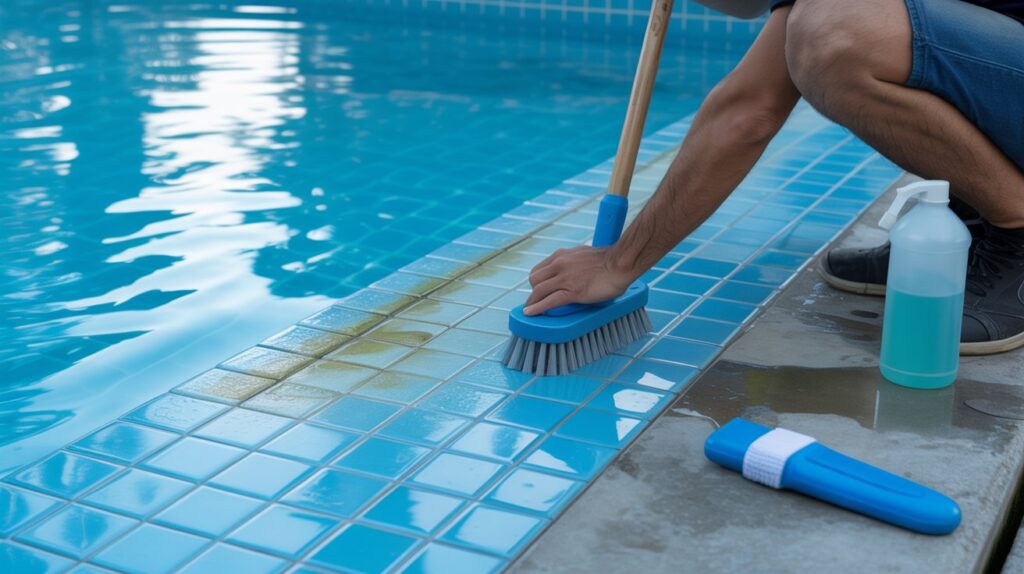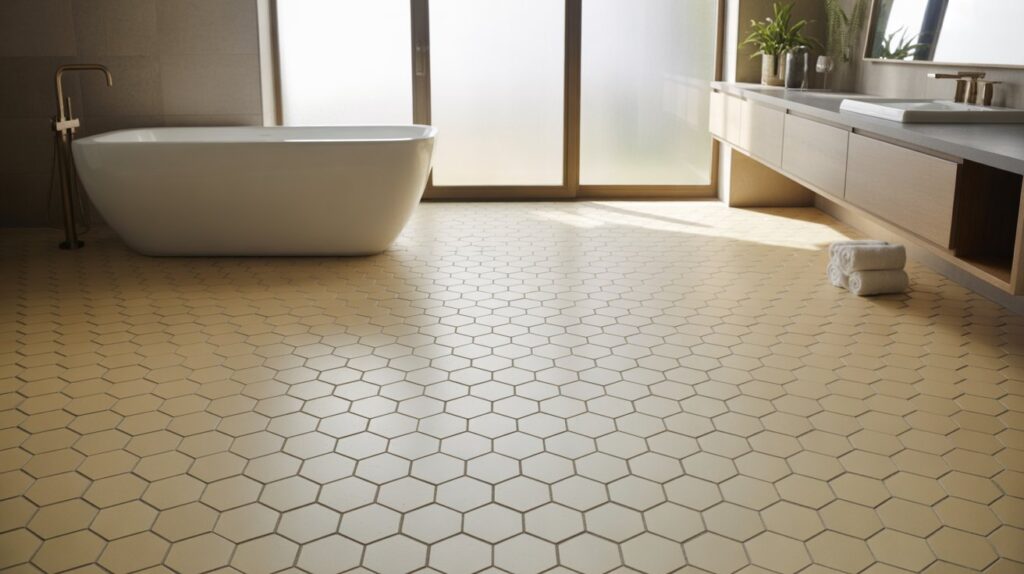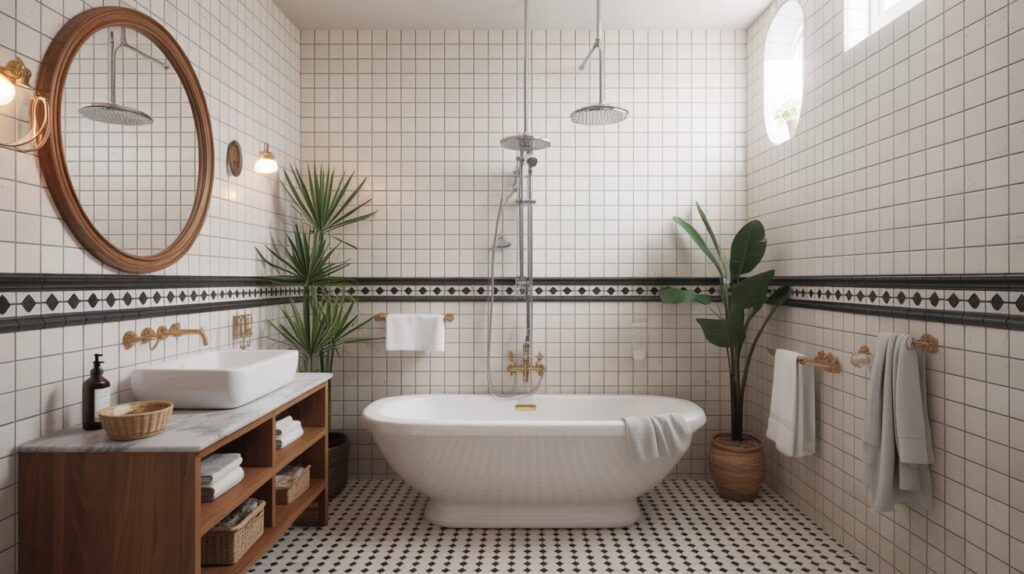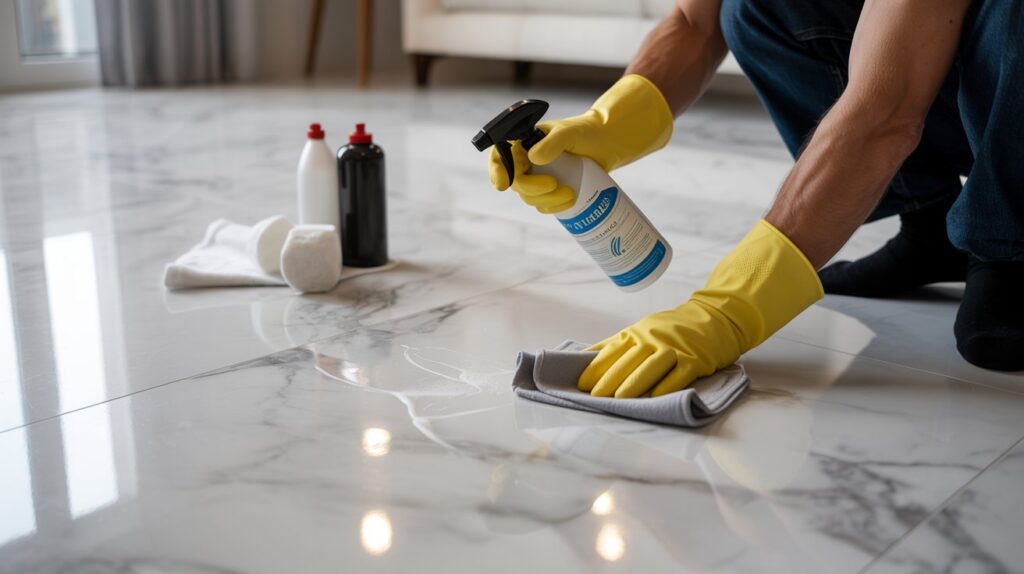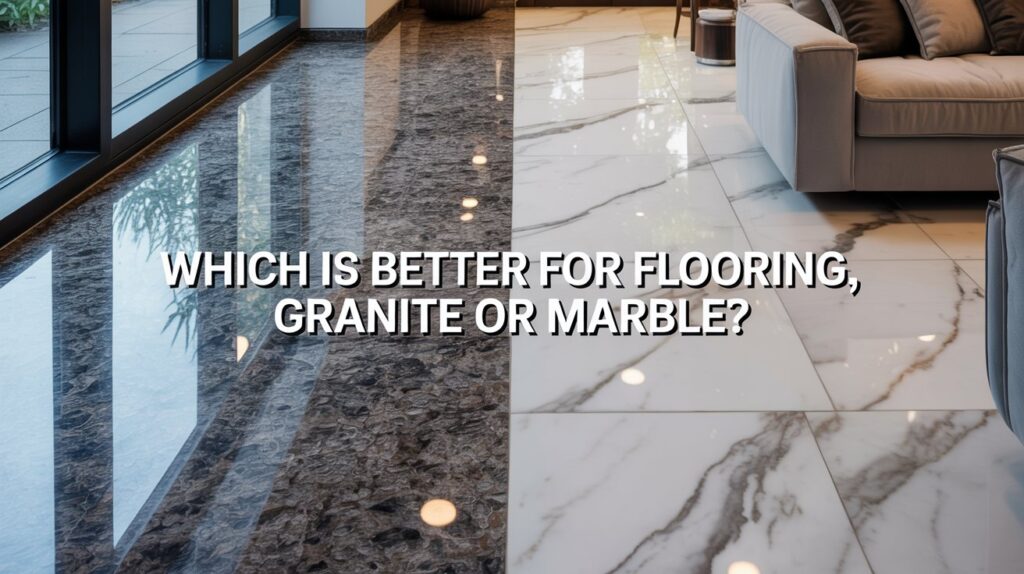How to Clean Swimming Pool Tiles: A Complete Professional Guide
How to Clean Swimming Pool Tiles: A Complete Professional Guide Cleaning swimming pool tiles is an important part of maintaining a fresh, healthy, and inviting pool. Over time, tile surfaces collect mineral deposits, dirt, sunscreen residue, and algae that can take away the shine of your pool. In this guide, you will learn how to clean swimming pool tiles and maintain clean tiles throughout the year. This article also explores cleaning glass tiles in a swimming pool, maintaining grout between tiles, caring for mosaic tile surfaces, and treating tiles above the waterline. By the end, you will have a complete understanding of the tools, techniques, and natural or professional cleaning solutions needed to keep your pool tiles spotless, polished, and long-lasting. What You Will Need To Clean Swimming Pool Tiles To clean swimming pool tiles effectively, gather essential tools and materials first. You will need a pool vacuum, skimmer net, soft and stiff brushes, protective gloves, a bucket, and a pumice stone for tough deposits. Cleaning solutions like baking soda, vinegar, or mild tile cleaners help remove grime and calcium buildup safely. Equipment and Tools You may need items such as a pool vacuum, skimmer net, soft and stiff brushes, protective gloves, a bucket, a pumice stone, microfiber cloths, and eye protection. These tools help remove loose dirt, skim floating debris, and scrub away hard buildup without damaging the tile. Materials Useful cleaning materials include baking soda, dishwashing liquid, melamine sponges, tile cleaning products, vinegar, soda blasting solutions, hydrogen peroxide, and mild acids. Always choose products that are safe for your specific tile type, especially when cleaning glass or mosaic surfaces. Why Pool Tile Cleaning Matters Pool tiles stay in constant contact with water that contains minerals, chemicals, oils, and organic particles. When water evaporates, minerals settle on the tile surface and form hard deposits. Without regular cleaning, these deposits can discolor the tiles and make the waterline look dull. Dirty tiles can also develop algae and bacteria. This not only affects the beauty of your pool but can also create slippery surfaces. Regular tile maintenance prevents damage, preserves the appearance of your pool, and reduces long-term repair costs. Types of Pool Tile Buildups and What Causes Them Pool tiles can develop different types of buildup. Mineral deposits, body oils, algae growth, and general dirt can gather around the waterline. Hard water rich in calcium and magnesium often creates a white or gray scale. Sunscreens, lotions, and organic matter add a sticky film that traps dust and grime. If the tile grout remains wet for long periods, it may darken or stain. Mosaic tiles and glass tiles show marks more quickly because their smooth surfaces highlight residue. Understanding the cause helps you choose the correct cleaning method. How Often Should You Clean Pool Tiles Cleaning frequency depends on pool usage, water quality, and climate. Light cleaning should be done weekly or at least monthly. Waterline tiles should always be cleaned whenever discoloration appears. At a minimum, clean tiles before and after every pool season. Regular cleaning prevents heavy buildup, making every cleaning session easier and reducing the need for strong chemicals. How to clean pool tiles above the water line Cleaning swimming pool tiles at the waterline is essential because this area collects the most dirt, oils, and calcium deposits. Lower the water level slightly, apply a mild cleaning solution, and scrub with a soft or medium brush. Rinse thoroughly to reveal clean, bright, and smooth tiles. Run Your Pool Cleaner Begin the process by running your pool vacuum. This removes loose dirt and prevents it from settling back on the tiles while you clean. Removing floating debris first results in a smoother cleaning session. Remove Debris With a Skimmer Net Use a skimmer net to collect leaves, grass, insects, and any organic matter. Keeping the water surface clean reduces the amount of grime that sticks to the tile. Drop the Water Level Lower the waterline slightly so that the tiles are fully exposed. You may use a pump or a simple siphon. A lower waterline gives you better access to stains and buildup. Use a Scrub Brush on the Tiles For ceramic or porcelain tiles, use a stiff nylon brush. For glass tiles, use a soft brush to avoid scratches. Scrub in small sections, using gentle circular motions. Mix the Cleaning Solution Create a cleaning solution that fits the tile condition. Baking soda mixed with water forms a soft paste for mild stains. Dishwashing liquid and water work well for sunscreen residue. Always wear eye protection. Remove Dirt and Grime Apply your cleaning solution using a brush or melamine sponge. Scrub until the mineral deposits and body oils begin to dissolve. Rinse with fresh water and repeat around the pool perimeter. How to Clean Calcium From Swimming Pool Tiles Removing calcium from swimming pool tiles requires a careful approach because calcium forms stubborn white or chalky deposits along the surface. Start by lowering the waterline and applying a gentle descaling solution or a mixture of vinegar and water. Scrub the area with a soft or medium-bristled brush until the deposits loosen. Rinse well and repeat for heavier buildup. Use a Pool Tile Cleaning Solution Special tile cleaning products dissolve calcium scale. Apply the product according to the instructions and gently scrub the surface. Avoid Harsh Chemicals Strong acids may damage grout or delicate tiles. Always start with mild solutions before moving to stronger options. Create a DIY Acid Cleaner Muriatic acid mixed with water can help remove stubborn scale. Always add acid to water slowly. Wear gloves and goggles, and use this method only when mild cleaners fail. Scrub With a Soft Brush Use a soft or medium-bristle brush for gentle scrubbing. This protects glass tiles and mosaic surfaces. Avoid Using Pumice Stones on Delicate Tiles A pumice stone removes calcium effectively but may scratch glass or patterned mosaic tiles. Always test it on a small area first. Remove Leaves and Organic Debris Keeping the pool clean reduces
How to Clean Swimming Pool Tiles: A Complete Professional Guide Read More »

